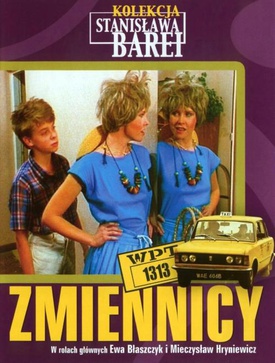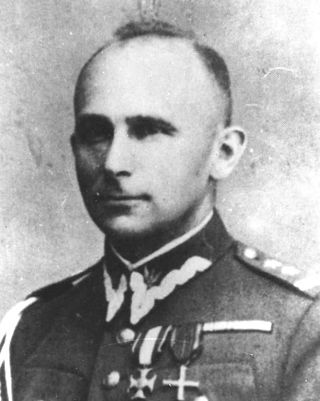Related Research Articles

The Great Emigration was the emigration of thousands of Poles and Lithuanians, particularly from the political and cultural élites, from 1831 to 1870, after the failure of the November Uprising of 1830–1831 and of other uprisings such as the Kraków uprising of 1846 and the January Uprising of 1863–1864. The emigration affected almost the entirety of political elite in Congress Poland. The exiles included artists, soldiers and officers of the uprising, members of the Sejm of Congress Poland of 1830–1831 and several prisoners-of-war who escaped from captivity.

Ivan Chodkiewicz; was a Ruthenian noble from the Grand Duchy of Lithuania. He was a son of Chodko Jurewicz and ancestor of the Chodkiewicz family. Ivan married Jawnuta (Agnieszka) Belska, first cousin of Casimir IV Jagiellon. The marriage into the royal line helped him to obtain positions of starosta of Lutsk (1473) and voivode of Kiev (1480). During a Tatar invasion in 1482, Ivan and his family were taken hostage. Ivan died in captivity while his wife, daughter Agrafena, and son Aleksander Chodkiewicz were ransomed and continued the family line.
Romanticism in Poland, a literary, artistic and intellectual period in the evolution of Polish culture, began around 1820, coinciding with the publication of Adam Mickiewicz's first poems in 1822. It ended with the suppression of the January 1863 Uprising against the Russian Empire in 1864. The latter event ushered in a new era in Polish culture known as Positivism.

Zmiennicy is a Polish comedy TV series completed in 1986 and aired in 1987. Many famous Polish actors appear in Zmiennicy.

Antoni Bohdziewicz was a Polish screenplay writer and director, best known for his 1956 adaptation of Zemsta by Aleksander Fredro.
Bishops of Przemyśl archdiocese:

The Diocese of Płock is a Latin Church diocese of the Catholic Church located in the city of Płock in the Ecclesiastical province of Warszawa in Poland.

The Diocese of Włocławek is a Latin Church ecclesiastical territory or diocese of the Catholic Church in Poland. It is a suffragan in the ecclesiastical province of the Metropolitan Archdiocese of Gniezno. Until the 20th century it was known as the Diocese of Kujawy

The Bureau of Information and Propaganda of the Headquarters of Związek Walki Zbrojnej, later of Armia Krajowa, a conspiracy department created in spring 1940 during the German occupation of Poland, inside the Związek Walki Zbrojnej, then of the Supreme Command of Armia Krajowa.

Polonia, the name for Poland in Latin and many Romance and other languages, is most often used in modern Polish as referring to the Polish diaspora. However, as can be seen from the image, it was also used as a national personification.

Mieczysław Hryniewicz is a Polish actor. He has made around 40 appearances in film and television. He starred in the 1986-1987 television series Zmiennicy.
Biały mazur is a Polish historical film. It was released in 1979.

Młody Las is a Polish historical film. It was released in 1934.

Vampires of Warsaw is a 1925 Polish silent crime film directed by Wiktor Biegański and starring Oktawian Kaczanowski, Halina Labedzka and Maria Balcerkiewiczówna. It was Biegański's most popular film, and displayed the influence of Soviet cinema on his work. The film is considered lost, so it's difficult to describe the plot in detail, but the film appears to have been a murder mystery whodunit and did not actually feature any vampires of the supernatural variety.

The Battle of Rawa was one of skirmishes of the Polish January Uprising. It took place on 4 February 1863 in the town of Rawa Mazowiecka, Russian-controlled Congress Poland. A unit of Polish insurgents under Antoni Jeziorański, and Aleksander and Franciszek Sokołowski, managed to capture barracks of the Imperial Russian Army. The remaining Russians retreated towards Skierniewice. With several pieces of weaponry and an unknown number of prisoners, the Poles then headed southwards.

Stefan Brykczyński was one of the members of 19th-century January Uprising in Poland. Today, he is mainly known as an author of his memories from uprising, which were the basis for the para-documentary movie Rok 1863 released on the 150th anniversary of the uprising.
Aleksander Ścibor-Rylski was a Polish screenwriter and film director. He wrote for more than 25 films between 1951 and 1981. he was born in aristocratic family of Clan Ostoja.
Antoni Kocyan was a Polish-Hungarian naturalist, specimen collector, and forester. He was a collector of birds and small mammals particularly from the Tatra mountains. A Silurian fossil coral Avicenia kocyani is named in his honour.